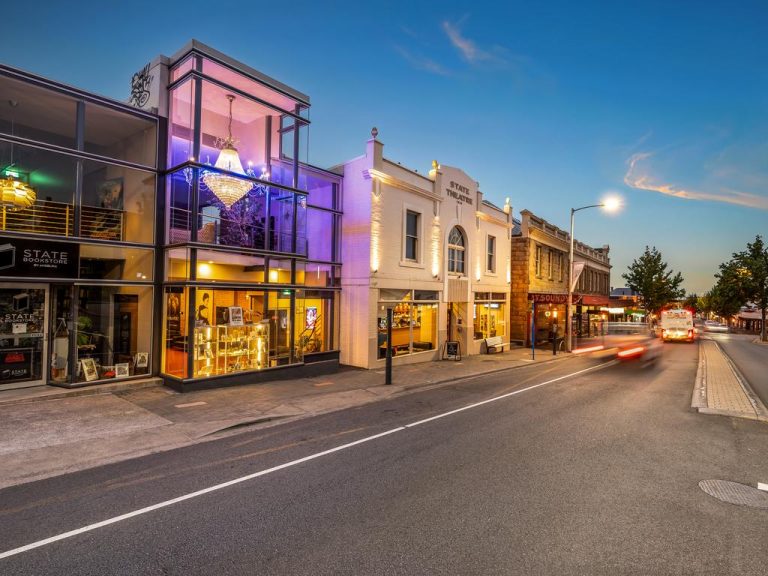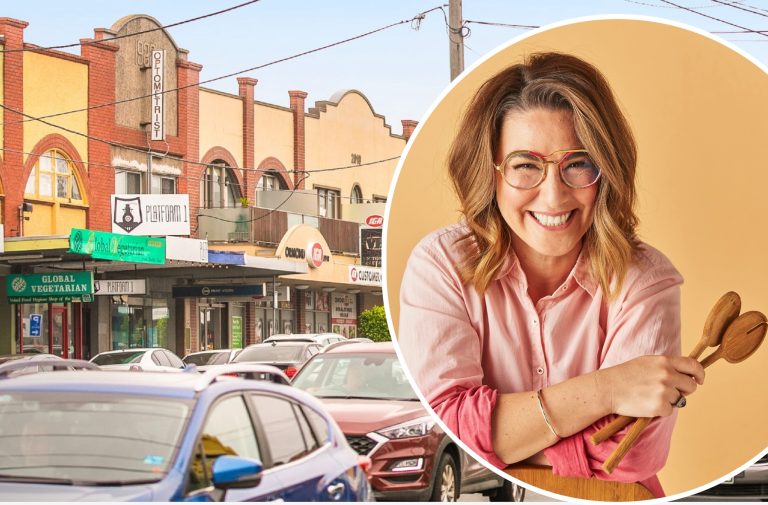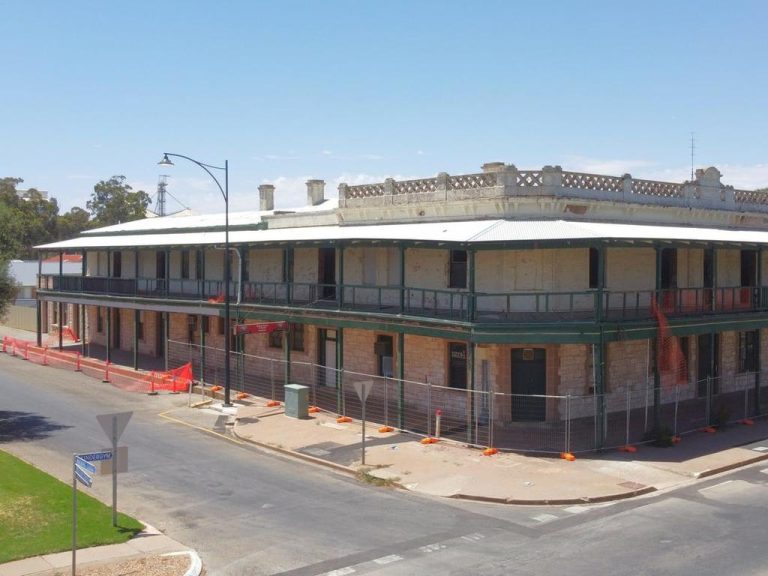Is bigger really better? The Big Things bringing tourism dollars to small Aussie towns
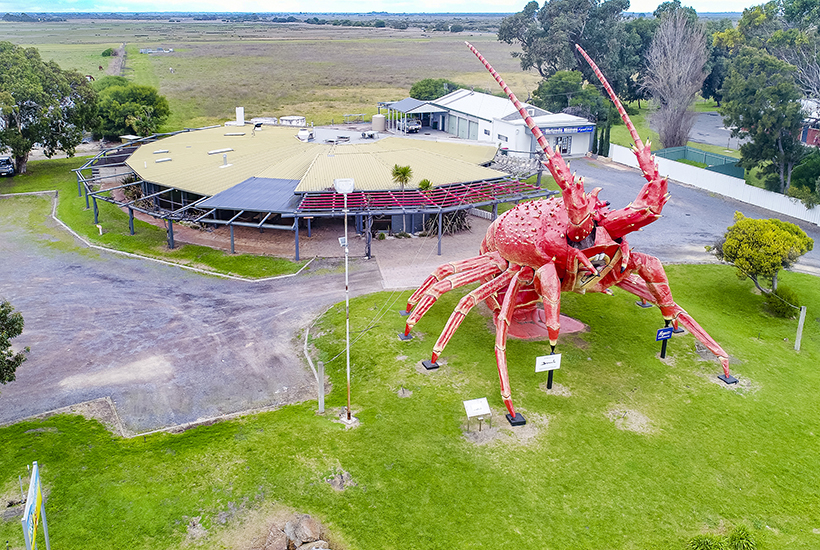
They are big, brash and beautiful in their own way, but the iconic ‘big things’ dotted across Australia’s small towns can also be a bother.
Whether you find them cringeworthy or clever, these giant offbeat monuments offer a welcome distraction on a long, boring road journey.
A Big Prawn or Big Pineapple can also help put towns on the map and generate valuable tourism dollars for the local economy.
But these curiosities come with a catch – they don’t always age well, can be expensive to maintain and don’t always earn their keep. Just because they are big doesn’t necessarily mean the commercial flow on effects are better.
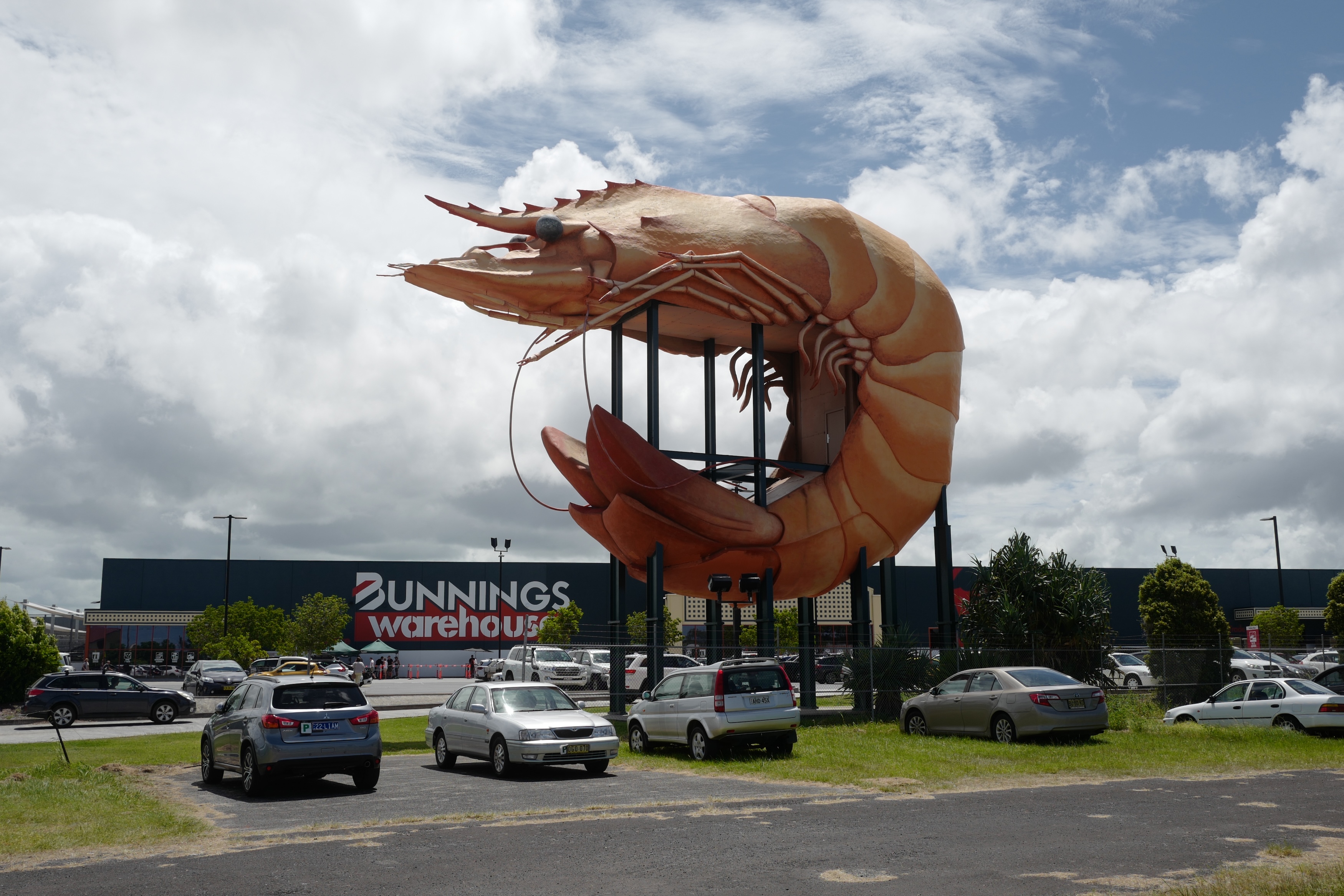
Ballina’s Big Prawn underwent a restoration in 2013, costing Bunnings $400,000 after it was originally built in 1989. Picture: Getty
Generally, if the Big Thing is generic and represents something common to the wider area, such as a banana or koala, rather than specific to one specialised business, it will lure visitors to the area, according to University of the Sunshine Coast history lecturer Dr Amy Clarke.
“This can flow over to surrounding commercial properties,” she told realcommercial.com.au.
“There would be examples where a small town has erected a Big Thing that represents a product their region specialises in, and this attracts people to the town, who in turn spend money at a variety of businesses.
“If the Big Thing is really specialised though, it may not have that effect.”
A niche market
When it comes to location, location, location you can’t beat South Australia’s colossal crimson crustacean, Larry the Lobster.
Larry is a drawcard in the quaint little fishing town of Kingston South East, about 300 km south of Adelaide.
The 17-metre tall attraction, which weighs about four tonnes, has been charming tourists en route to the gorgeous beaches of the Limestone Coast since it was unveiled in 1979.

The Big Lobster tourist attraction at Kingston in South Australia hit the market in 2017. Picture: realcommercial.com.au
Larry even underwent a $50,000-plus makeover about seven years ago to keep him looking fresh.
But when he was put on the market in 2017 with the accompanying restaurant building, the landmark crustacean failed to draw a bid. Eventually a local pastoralist family stepped in to save the sculpture, preventing its move interstate.
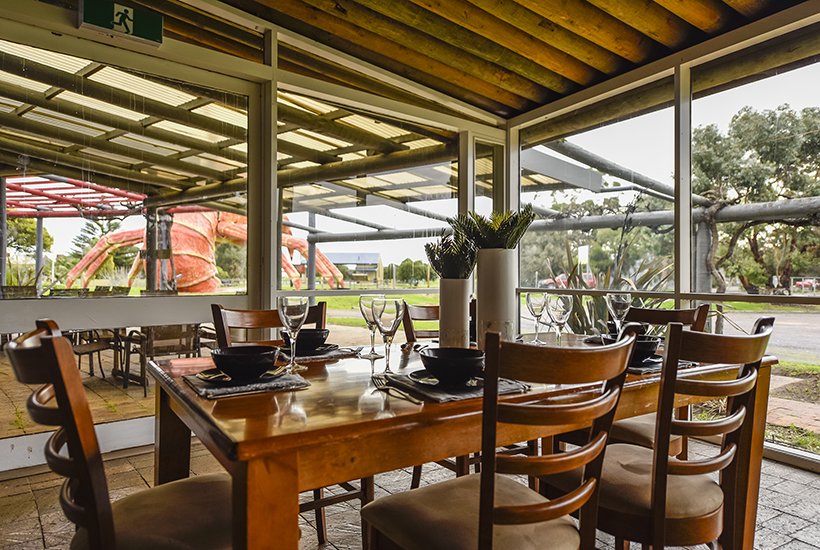
The restaurant and function centre had a prime view of Larry. Picture: realcommercial.com.au
Today, Larry’s allure hasn’t been quite enough to secure a buyer for the car and boat wash opposite, which has been on the market for a year.
It’s a fact that baffles local Kait Copping, the local Elders agent selling 13 and 15 Princes Highway, Kingston SE.
“We haven’t had any offers at all, but we have had lots of inquiries about it. It’s just surprising no one’s wanted to buy it,” Kait told realcommercial.com.au.
The car and boat wash property is owned by a local farmer and his family owns the neighbouring vacant block.
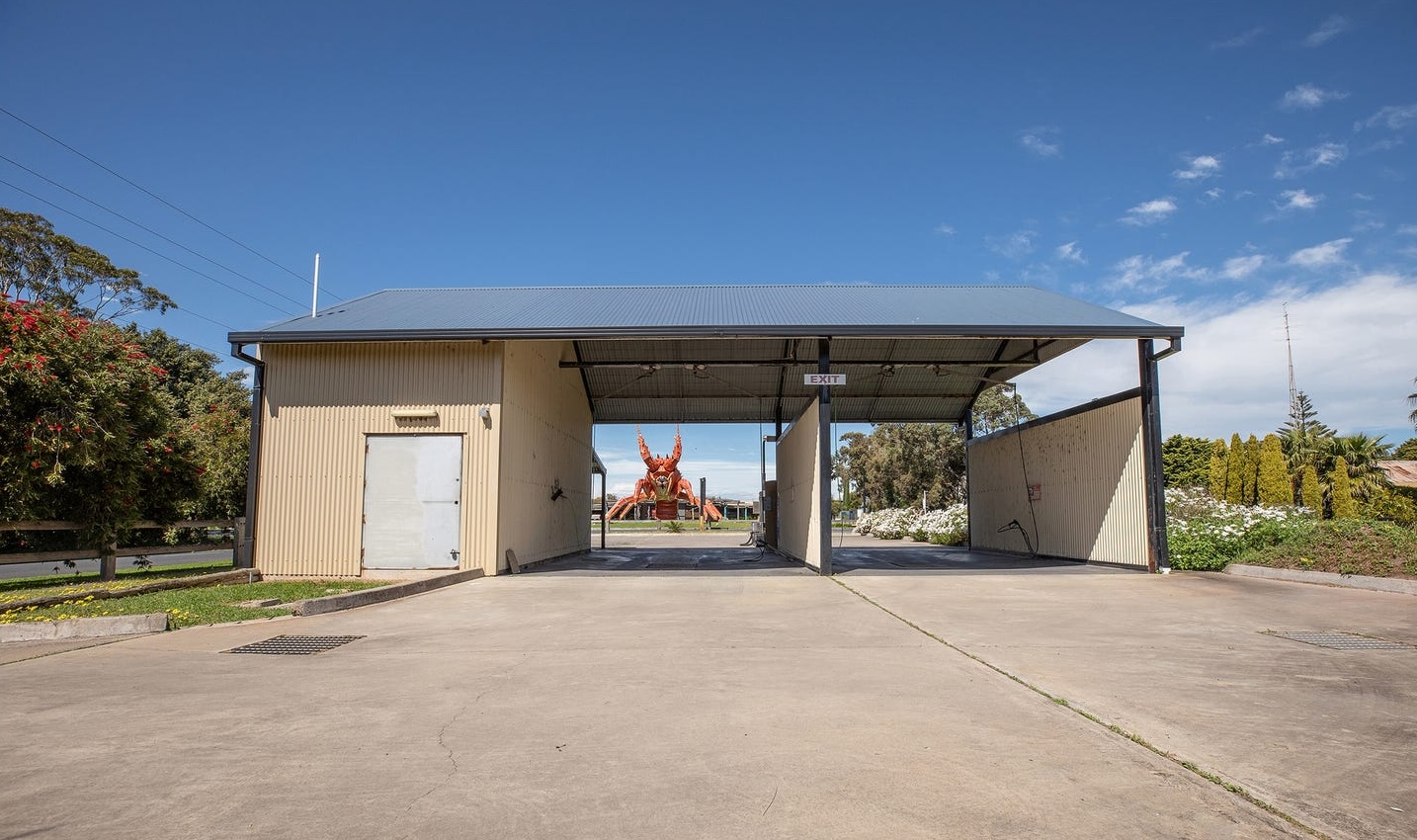
On the market: A carwash opposite Larry the Lobster has high traffic exposure. Picture: realcommercial.com.au
He is selling to prioritise his farming business and both allotments are being sold together for $345,000, though they can be purchased separately.
The prime position opposite Larry offers buyers the chance to leverage off the high traffic exposure, Kait pointed out.
“You should see the cars that pull up there,” she said.
“On a nice day, maybe more towards Friday to Monday, you’d probably at one time have six to eight to 10 vehicles parked on the roadside in that area.
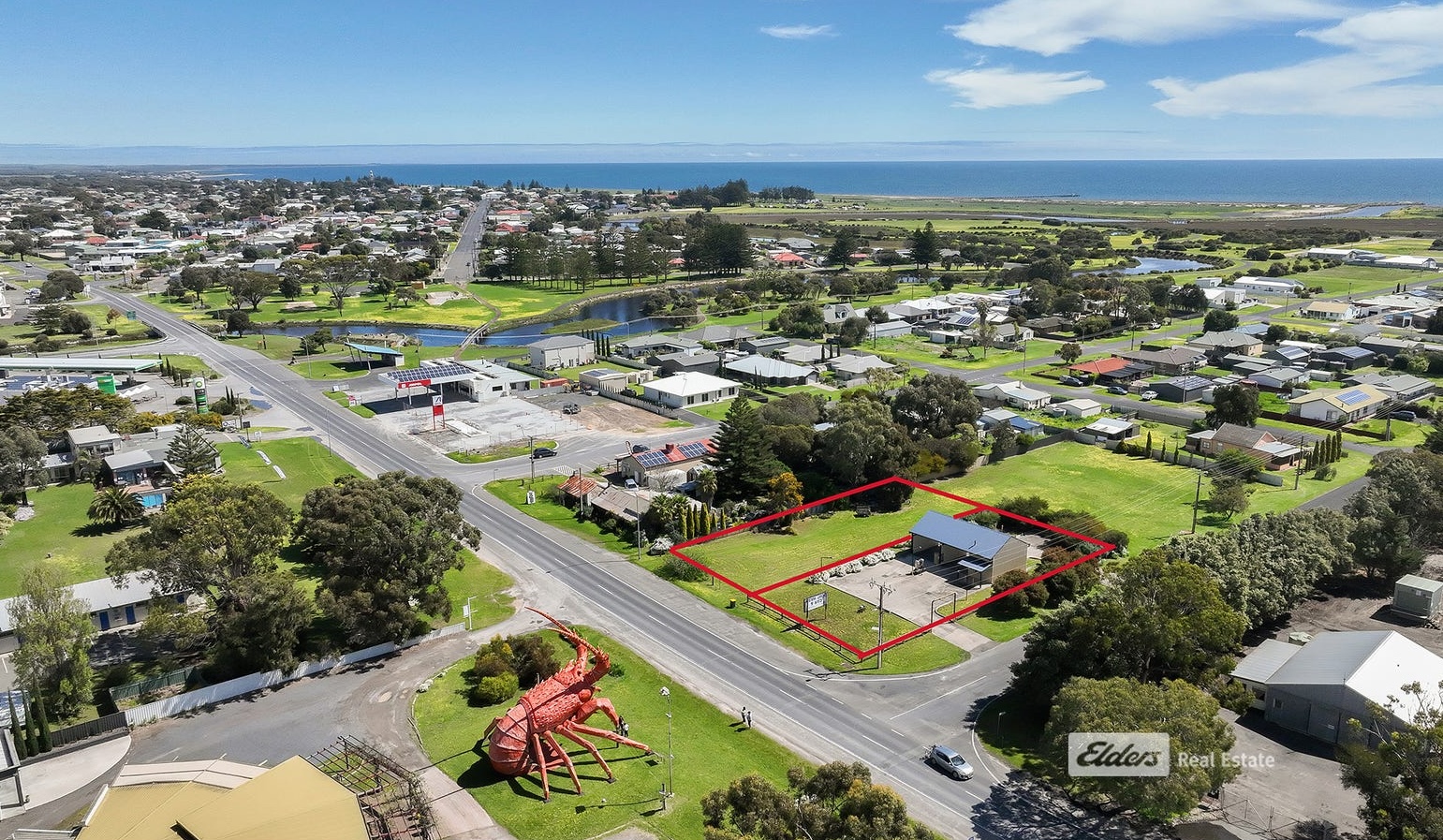
Prime position, there is an opportunity to purchase the block next door to expand the car wash business, or start a new one. Picture: realcommercial.com.au
“It’s unlikely that you drive through and not see one person standing out the front of Larry trying to take a picture of themselves.
“It actually astounds me that this hasn’t sold.”
Developing a hospitality business like a cafe would be ideal, she said.
A boon for business
More than 750 km north at Kimba, tourists are flocking to another oversized monument: a Big Galah.
The feathered wonder was built by the local Venning family to lure shoppers to their attached restaurant and gift shop.
“The Vennings had it for 25 years. Then they sold the business to another local farming family and they’ve just since sold it,” local agent Phil Arcus, from Phil Arcus Real Estate Kimba said.
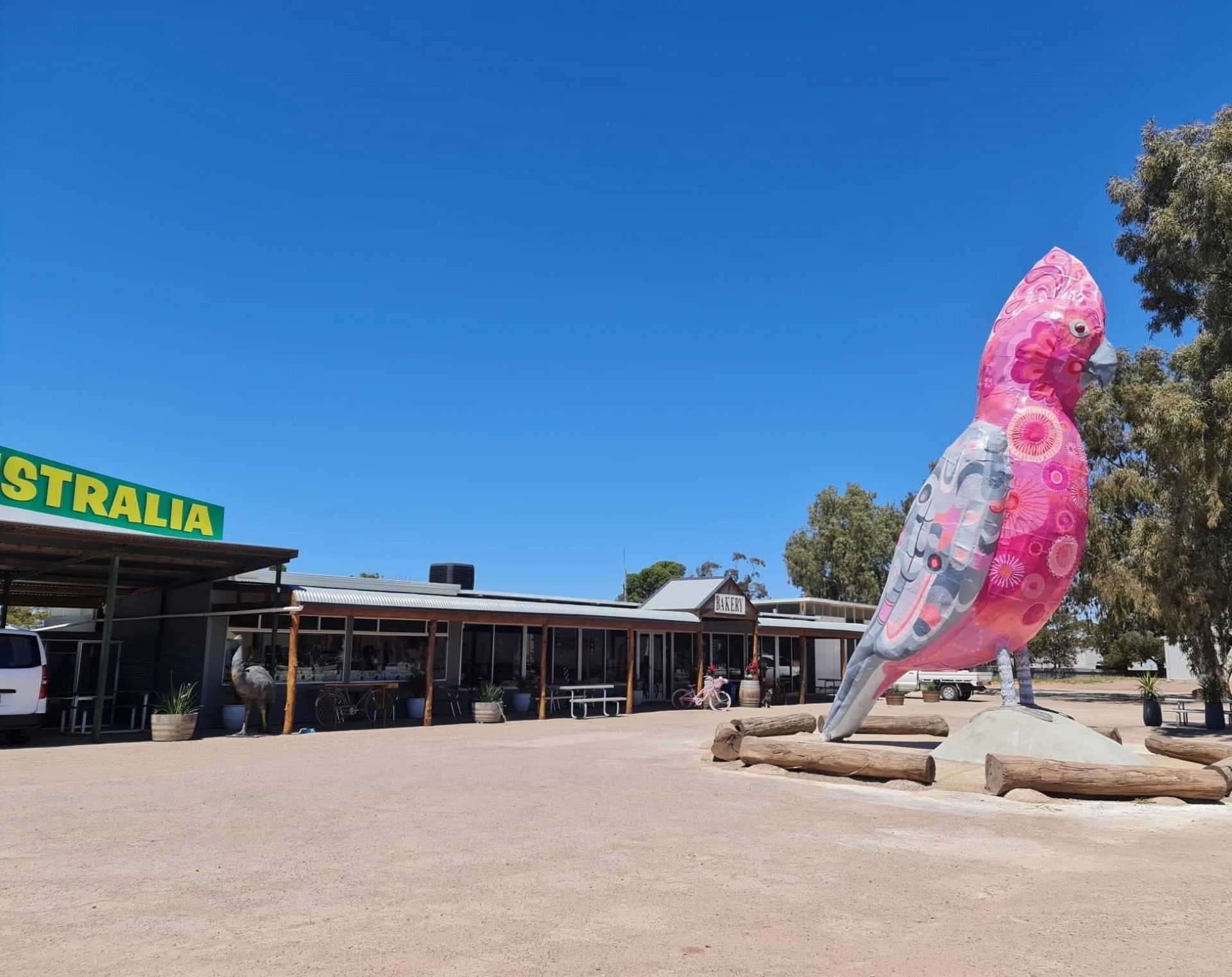
The 8m tall Big Galah sits in front of a souvenir store. Picture: Kimba District Council
The new owners are no doubt hoping to capitalise on the eight-metre high galah, a cheery distraction on the highway of the wheat town, halfway between Sydney and Perth.
“People love it because it brings tourists and makes them stop, especially the people that own the business – they’re benefiting a lot. It’s a good tourist attraction,” Phil said.
But while some of Australia’s huge novelty sculptures have been saved at the 11th hour, others have been moved or torn down.
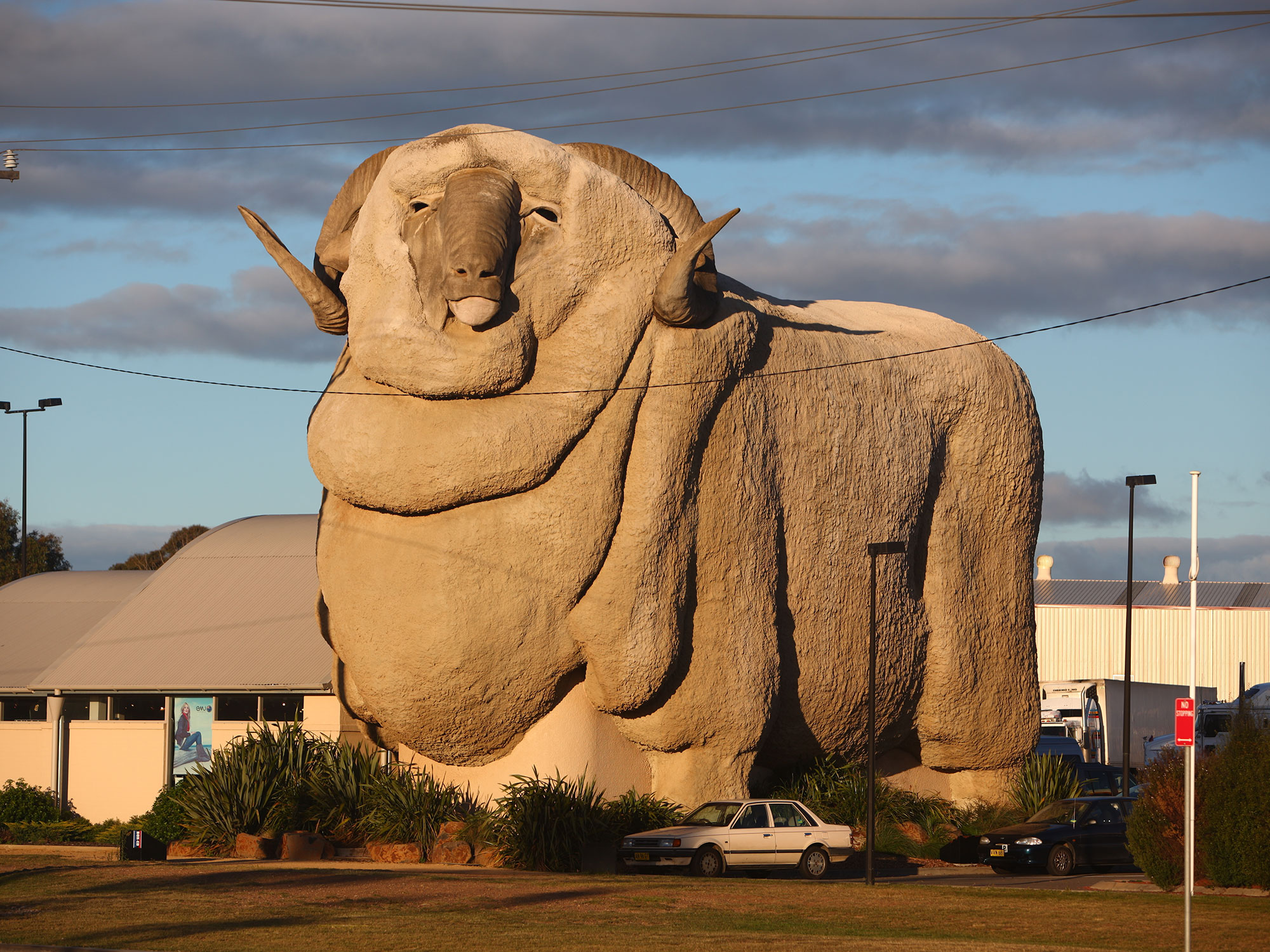
Australia’s big Merino is a drawcard for the town of Goulburn. Picture: Getty
Take for instance The Big Merino, built in 1985 in Goulburn, NSW as a homage to the district’s wool industry.
The grand steel and concrete structure soaring over 15 metres high took six months to build.
But when the Goulburn bypass was constructed, the lifelike model of Rambo – a stud ram from a local property ‘Bullamallita’ – was left languishing in solitude.
Rather than being overlooked by local motorists, Rambo was trucked at great expense 800 metres down the road to reclaim his status as one of the country’s most impressive big things.
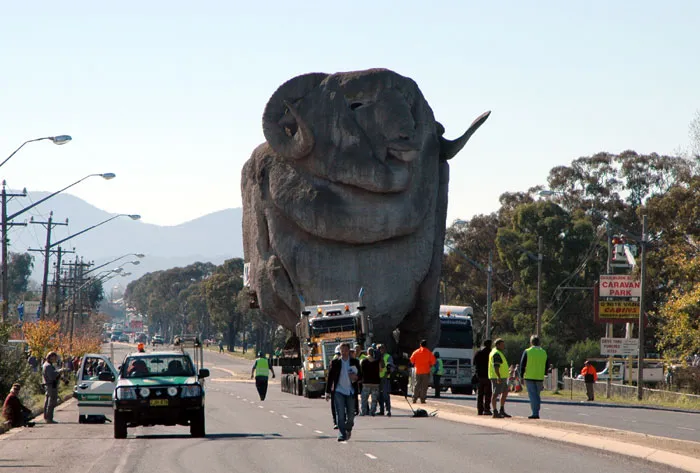
In 2007, ‘Rambo’ was moved 800m after the Goulburn bypass meant he was stranded in no mans land. Picture: The Big Merino
The power lines were taken down and the road closed while the merino was moved. Rambo was given a new lease on life, though, with a gift shop and permanent wool exhibition built inside the structure.
Controversy surrounding the Big Things
In the small NSW Southern Highlands town of Robertson, the Big Potato stretches for 10 metres across the otherwise picturesque landscape.
Local potato grower Jim Mauger built the hollow spud in the late 1970s to promote his industry and it sold along with a neighbouring supermarket in 2022 for an undisclosed sum.
The 200 sqm potato block had previously had a price guide of $920,000 and the supermarket $1.2 million, according to media reports.
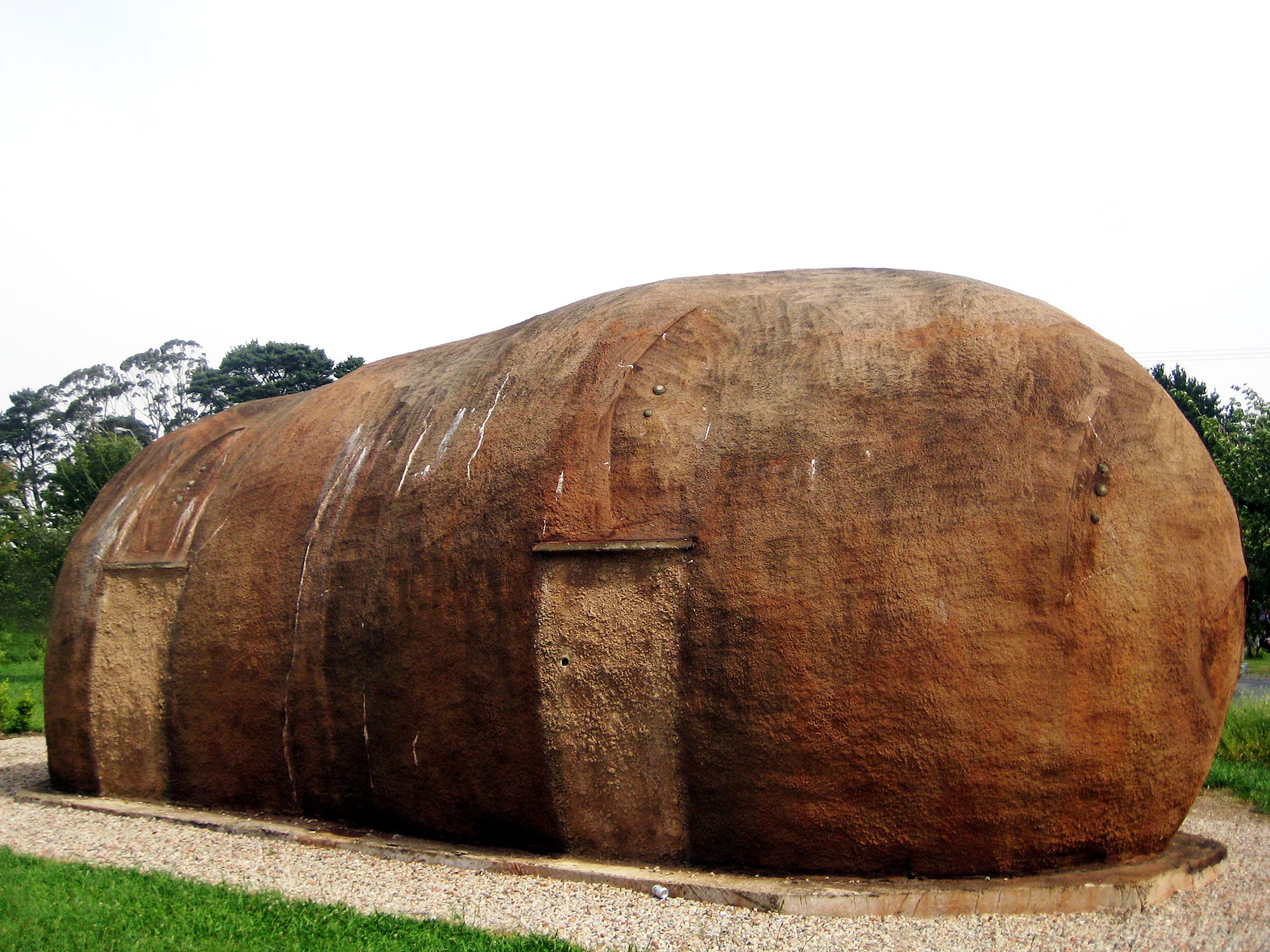
The Big Potato in Robertson has long been a tourist attraction. Picture: Getty
But some have continually roasted the potato, and in 2022 it was even voted Australia’s “sh***est big thing” according to the satirical Sh** Towns of Australia guide.
And in Cairns, a controversial Captain Cook statue was taken down in 2022 after James Cook University bought the land on which it stood.
The polarising eight-metre statue sparked political protests amid calls for its removal or demolition.
In the end it was removed by a demolition company owner who reportedly purchased it for a token $1.

